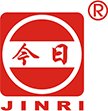What Is the Difference Between Slant Ring and D Ring?
When it comes to hardware accessories for bags, belts, harnesses, and outdoor gear, two commonly used options are slant rings and D rings. While both serve as connecting or attachment points, their design and functionality differ in important ways. Understanding the differences helps buyers choose the right component for their applications.
Shape and Design
Slant Ring A slant ring features an angled or offset shape. Unlike traditional rings that lie flat, a slant ring is designed with a tilted structure. This angled orientation allows straps, ropes, or fabric to lie naturally without twisting.
D Ring A D ring has a half-round shape resembling the letter “D.” One side is flat, and the other side is curved. The flat side provides stability when sewn onto straps, while the curved side offers smooth movement for hooks, ropes, or other attachments.
Functional Differences
Slant Ring Functionality The angled design of slant rings makes them ideal for applications where strap alignment matters. They prevent fabric bunching and help maintain even tension. This is especially useful in bags, climbing harnesses, or heavy-duty straps where comfort and alignment are important.
D Ring Functionality D rings are more universal. Their simple shape allows for versatile use in belts, pet collars, backpacks, keychains, and luggage. The flat side gives stability, while the curved side ensures ease of movement for straps or hooks.
Strength and Durability
Slant Ring Slant rings are often engineered for higher tension control. Because of the angled design, stress is distributed more evenly, reducing wear on straps. This makes them reliable in outdoor or industrial equipment.
D Ring D rings are durable but typically designed for general-purpose applications. They handle pulling forces well but may create more wear on straps over long periods if used under constant high tension.
Comfort and Ergonomics
Slant Ring Comfort is a key advantage. The tilted structure ensures straps lay flat against the body or surface, minimizing pressure points. This feature makes slant rings popular in harnesses and sports gear.
D Ring D rings prioritize versatility over ergonomics. They are comfortable enough for everyday items like belts or collars but may not provide the same strap alignment benefits as slant rings.
Applications
Slant Ring Uses
Climbing gear and safety harnesses
Outdoor backpacks requiring strap alignment
Heavy-duty straps and load-bearing equipment
Specialized sports gear where comfort and positioning matter
D Ring Uses
Belts and fashion accessories
Pet collars and leashes
Luggage, handbags, and backpacks
Keychains and everyday attachments
Materials and Finishes
Both slant rings and D rings are commonly made from stainless steel, brass, zinc alloy, or durable plastic. Finishes may include nickel plating, black coating, or polished surfaces for corrosion resistance and aesthetic appeal. Buyers should consider environment and durability requirements when choosing materials.
Choosing the Right Ring
Choose a slant ring if strap alignment, reduced friction, and ergonomic comfort are your priorities.
Choose a D ring if you need a versatile, cost-effective solution for general attachments across fashion, luggage, or light equipment.
Conclusion
The main difference between slant rings and D rings lies in their design orientation and functional purpose. Slant rings are angled for comfort and strap alignment in heavy-duty or ergonomic applications, while D rings provide a versatile, general-purpose solution for everyday items. By understanding their distinctions, businesses and manufacturers can make informed decisions when sourcing hardware for their products.
Previous: What Are The Three Types of Binders?
Next: What Are D Rings?



